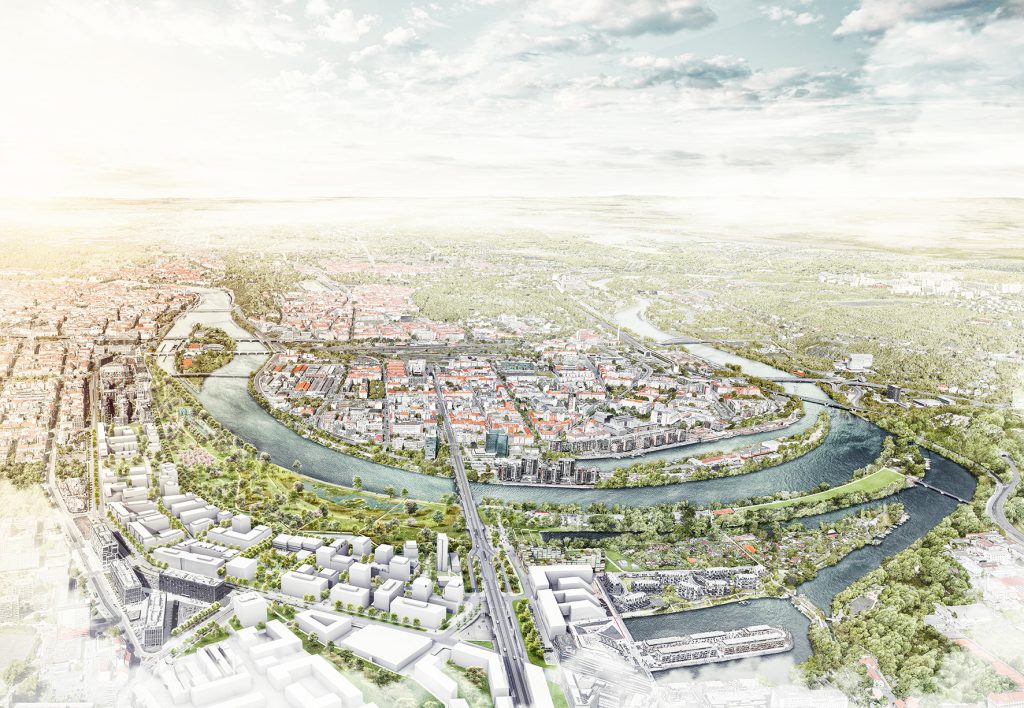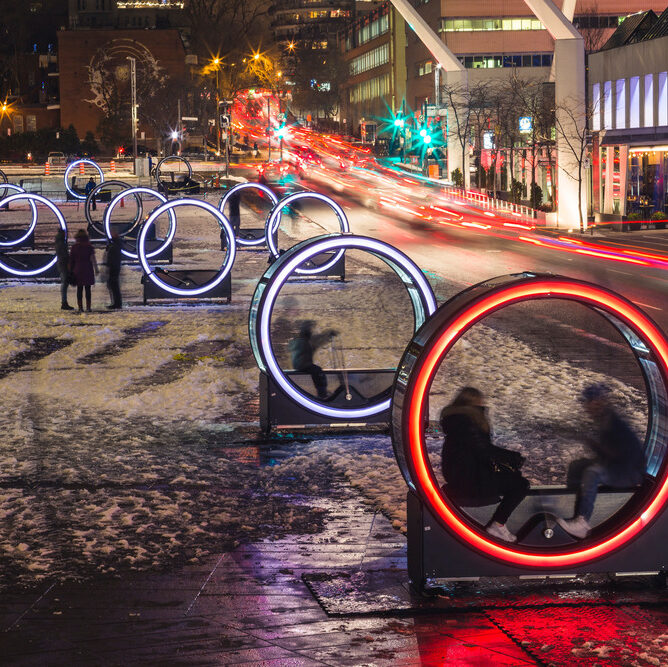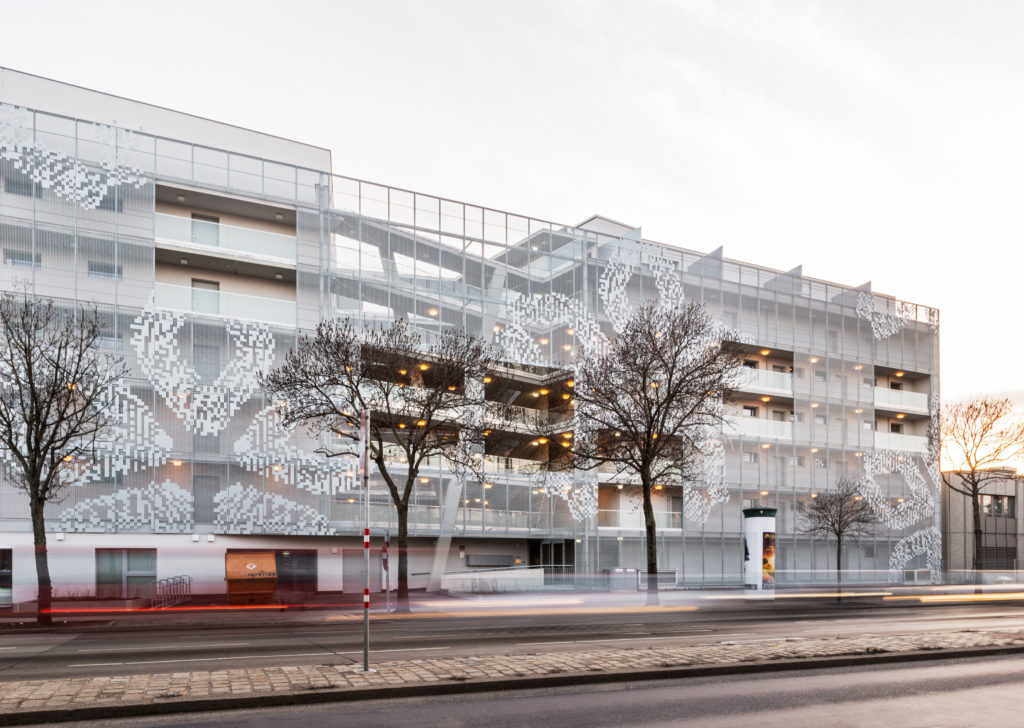
Billboard
Skyscrapper
Halfpage
Rarely have I experienced so many critical political discussions on my trips to Moscow as on this one, last October. Perhaps it’s because the situation continues to intensify, with the country leaning increasingly towards nationalism, to “make Russia great again”. The architect Kiril Ass (*1974) is one of the sharpest minds of his generation. He designs, teaches and writes about architecture. He is an architect in the firm of Alexander Brodsky, one of the main proponents of Soviet “paper architecture”. The exhibitions he creates together with his wife Nadya Korbut are precise and immersive. Among other places, he teaches at the Moscow School of Architecture, an independent university based on the system of the London Metropolitan University.
Five questions about urban planning, architecture and power in Moscow.
How has Moscow changed in recent years, especially since Sergei Sobyanin came to power as mayor?
Sobyanin was appointed by Putin in 2010, which is different from Yury Luzhkov, his predecessor. Luzhkov was one of those typical “self-made men” of the 1990s. But he was elected by the population in more or less fair elections – at least at the beginning – and held this position for 18 years. His strong interest in architecture had a lasting influence on the city. Of course, he had terrible taste when it came to his favourite architects and styles. But that’s a different story.
In contrast, Sobyanin was not elected, but appointed. The elections were held two years after he took office. Given the situation they were easy to manipulate, like so many other elections as well. Initially, the policies of the new Moscow government were quite liberal. New theatres were opened, libraries renovated and Gorky Park received a total makeover. These activities were linked to a special person named Sergei Kapkov, who was Moscow’s Minister of Culture from 2011 to 2015 and quite cosmopolitan, with a Western-oriented political style. In retrospect, this could be considered the start of the city’s “hipsterization”. A voice was given to the young, urban generation, and the new city projects – public space in particular – were designed for them, with bike lanes, free WiFi, etc.
Dmitry Likin, one of the two founders of the architectural firm Wowhaus, told me that Sobyanin is truly interested in public space. Only aesthetically, he is not very educated.
That’s not the point. Public space is for the public. But if the public does not exist, then the project is pointless. Public space also played an important role in Soviet architecture, only it was totally organized. It is said – unofficially, of course – that it is forbidden to include old people in renderings of public space presentations submitted to the government. The city administration wants to see a specific image of the city: one with young, happy people. The elderly, the poor and the sick are excluded.
How long did this phase of hipsterization last, and how is it seen in retrospect? The term sounds a bit cynical.
Culturally it lasted as long as Kapkov was in office. Commercially new businesses continue to show up. In March 2015, Kapkov resigned and withdrew altogether from politics. His successor is clearly more conservative. This coincided with an increasing shift towards nationalism, spurred by the crisis in Crimea and later the crisis in Donetsk. All of the hardcore ideologues came out of hiding, suddenly they were everywhere. This lead to theatre performances being called off, exhibitions being shut down – such as the one in Moscow by New York photographer Jock Sturges – festivals were cancelled, and so on.
The time under Kapkov was a good start, because the city began to focus on people, and this somewhat counteracted the excessive dominance of the automobile. By then, some of the inner-city roads had degenerated into expressways. Just recently, in early October of this year, public transportation – the bus system – underwent a major update with new routes added and overall restructuring. But along with the good news was also some very negative news. This spring, hundreds of kiosks – small shops that used to line the streets, where you could buy food, cigarettes, coffee, newspapers or flowers – were torn down in a single night. The reasoning behind this was that they were illegal. Which is absolute nonsense, because the city has approved them once. For the most part, these kiosks were not at all beautiful, but they were important for public life – not to speak of hundreds of ruined small businesses. Now the city has replaced them with a strange “city beautification” programme.
You mean those bright archways standing around everywhere, like on the Arbat…
Exactly. There are constantly “festivals” of one kind or the other taking place, such as the “Honey Festival” or the “Sausage Festival”. For things like that, temporary objects and kiosks are erected, but they sell overpriced food where nobody needs it. People get something to eat on the street, either at lunchtime or on the way home from work. The diverse economy of the city means people are rushing around the city all the day. Naturally urban nodes are located near railway stations and subway stations. These new “objects”, however, are set up wherever the administration wants to “beautify” the city. It’s hardly a fair or even convincing business model. The kiosks within these decorations appear and disappear again after one or two months. It is obviously impossible to set up a bond with or at least to rely upon such an uncertain locale. So they are more of a weekend attraction than a replacement for the lost businesses. Those archways you saw on the Arbat have already been dismantled. They were built for the Autumn Festival. Currently, most of the green spaces along the large boulevards have been covered in butterfly-shaped LEDs. They are lying there in the snow, and it doesn’t look nice, but yes, they are there.
To put it another way: the city consists of a series of rules so that people can co-exist and fulfil their needs. But when the city administration decides that it knows the needs of its residents better than the residents themselves, that means that the city is failing. Closing down all of those small businesses makes the city die a little. A city is like a living organism that must always have the opportunity adapt to itself. This cannot be dictated from above. Of course some of the small shops relocated elsewhere, but it’s not like it used to be. Comfort and convenience have been sacrificed for visual order.
Medium Rectangle
Halfpage
Who designs these city beautification elements?
A special office in the Moscow administration, which is led by some very strange women. I have no idea how to the whole production is financed, nor who receives these huge commissions. Some of the objects are very large. But the entire process, from design to production, is carried out in secret. If you look at the tender database for the city of Moscow, you’ll see bids by company A and company B. But no one knows either of them.
Comparing Russia’s presentation at the 2016 Architecture Biennale in Venice to the one in 2014, it’s apparent that both the topic as well as the approach to the productions are absolutely contradictory. In 2014, Strelka staged the pavilion as a crazy trade fair. But in 2016, there was that pathetic tribute to VDNKh, the Exhibition of Achievements of National Economy from 1941. To what extent is the political shift towards nationalism reflected in the architecture?
Indeed, two presentations were very contradictory. At the Biennale, everything depends on the contracting authority, the Ministry of Culture. The team that designed the most recent contribution tried to manoeuvre the fine line between paying homage to Stalinist decor and a historically solid exhibition about our great past. VDNKh is a cultural monument from the Soviet era; it symbolizes our “glorious history” during the 1930s and 1940s. If you look at VDNKh closely, you’ll find a variety of architectural styles. But the imperial language, which is by far the most present, fits very neatly with the way that politics are conducted today.
The big problem is that the justification of Stalinism, or, if we take it broader, of state paternalism, is everywhere on the rise. Only recently, a monument to Ivan the Terrible was inaugurated in Oryol, 350 km southwest of Moscow. Monuments to Stalin are being built across the country.
















